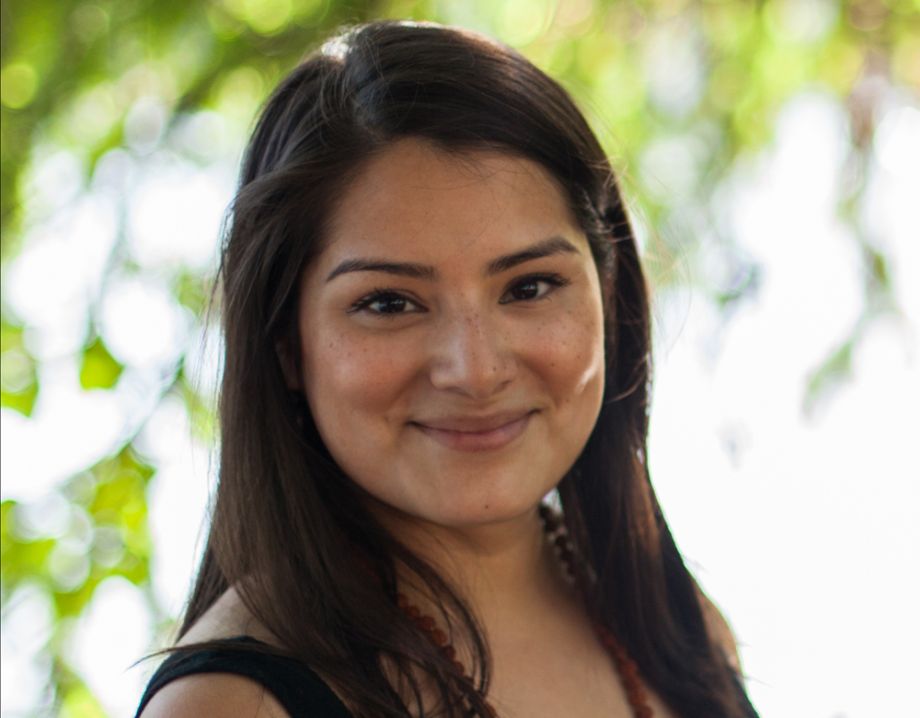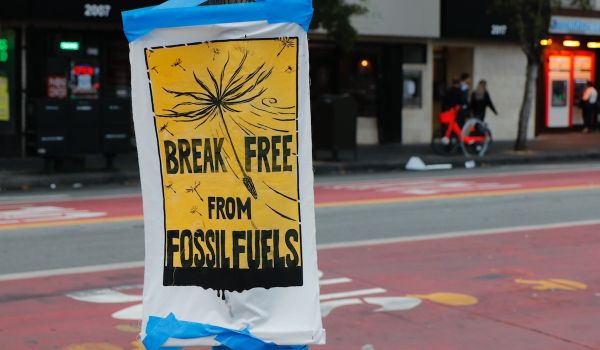In February, New York City Mayor Bill de Blasio appointed Adriana Espinoza — formerly the NYC program director for the League of Conservation Voters — as the city’s first senior advisor for environmental justice.
In the newly created position, mandated by a 2017 package of environmental justice laws passed by the New York City Council, Espinoza will oversee the city’s first-ever study on environmental justice issues. She’ll also work closely with Peggy Shepard, cofounder of WE ACT for Environmental Justice, who de Blasio has appointed as chair of the city’s new Environmental Justice Advisory Board, and the rest of the advisory board on “making sure environmental justice becomes embedded into the city decision making and the culture of city agencies and offices,” as Espinoza puts it.
She spoke with Next City on what led her to environmental activism, her priorities for this new role, and why environmental justice needs to become an integral part of climate policy.
This interview has been edited for length and clarity.
How did you get into the work of environmental justice?
I got into environmental work after the 2016 election, actually. Before that, I spent a few years focusing on voting rights and election reform. In the wake of the 2016 election I was trying to evaluate where I thought my voice and energies should be focused. I ended up at the New York League of Conservation Voters as the New York City program director, where I worked for three years advocating for climate action at the city level.
Some of the environmental justice issues I was honored to work on was the Asthma-Free Housing Act — a really long fight that advocates pushed for the city to hold landlords accountable toward addressing indoor asthma triggers, which is happening more in lower-income communities and communities of color — and also the city’s Lead Free NYC plan. My favorite pet project was advocating for electric school buses, a huge environmental and disability justice issue. Because, not only does it reduce transportation emissions, but school bus depots in New York City are cited predominantly in environmental justice communities. And the students who ride those buses every day are very often students with disabilities who are disproportionately impacted by diesel emissions.
At your time at the New York League of Conservation Voters, there was a surge of climate awareness, education, advocacy and protests. How did you experience that cultural shift and how does it contribute to your job now?
I think New Yorkers have been awake to climate change for a long time. Pre-Trump, I think Hurricane Sandy was a reckoning for a lot of New Yorkers. Ultimately, I think a lot of people went through something similar to I went through analyzing my own career path. There was certainly a shift and focus, finally, to addressing climate change and calling it out with the urgency with which it needs to be.
I saw that from our elected officials, in Mayor de Blasio’s OneNYC 2050 plan — which is NYC’s Green New Deal — and from advocates across the city, either professional advocacy organizations or youth activists leading climate strikes. All that helped build this momentum. I think people were reacting in the same way that I was personally, wanting to be able to grab a hold of a solution and push towards progress on climate.
Do you think this advocacy and momentum you’re talking about contributed to the city creating your position, and a board, to focus on environmental justice?
Yes. I would say that advocacy really helped to create this space for environmental justice within the city. When I started at the League of Conservation Voters, it was just a few weeks before Local Laws 60 and 64 passed City Council and were signed by the Mayor. [The Environmental Justice Study Bill and the Environmental Justice Policy Bill required a citywide study of potential environmental justice communities and that city agencies develop plans to address environmental injustices in low-income communities of color.] But before that, there was about ten years or more of advocacy from organizations across the city.
There were also elected officials that helped spearhead this through the City Council, Councilmember Costa Constantinides and Councilmember Inez Barron. That fight was started by [Barron’s] husband, who originally introduced the bill. She picked it up and reintroduced it when she came into the city council. So there was many years of advocacy to get this started. I am just so honored to be able to pick up the mantle when I know so much work went into making it happen.
Can you give a sense of this new role you’re talking on?
I’m going to be working to implement Local Laws 60 and 64 of 2017. The bills really were a recognition, for the first time, of historic injustices that have disproportionately fallen on low-income residents and communities of color. This includes the impacts of climate change and the burden of pollution. This is us coming together with those communities that have raised these issues over many years to offer a different path forward.
What we’ll be doing is coming up first with a study of environmental justice that takes a look at all of the data that the city currently has: Everything from your access to green space, your vulnerability to heat, your likelihood to have negative health outcomes based on your zip code. We’ll be looking at all of these things to get a picture of how environmental justice has impacted communities throughout New York and where these disparities are.
We’re going to take this information and put it onto a data portal and map that will provide an online way for New Yorkers to come in, put in their zip code and see: What does environmental justice look like in my communities? What are the programs that I have at my disposal? And how do I stack up against the citywide average?
I’m hoping this will provide more access to data for communities so they can really take the reins on building out more environmental justice in their own communities, by giving them access to what the disparities are.
It sounds like the city is attempting to create a framework that could trickle down to community-based advocacy work.
Yes. Ultimately my goal is about providing more tools to allow communities to have some self- determination and input on the future of their own communities. At the same time, we’re working with an advisory board that’s made up of environmental justice advocates from across the city. And we’re going to come up with the city’s first-ever comprehensive plan on environmental justice, really taking what we find from the study and making sure environmental justice becomes embedded into the city decision making and the culture of city agencies and offices.
We don’t want environmental justice or equity and inclusion to be an afterthought, but really baked into how the city makes their decisions. So in addition to providing data so that communities have access, we’re also working with those communities to come up with a citywide plan as well.
What policy or advocacy work is already succeeding in putting environmental justice front and center?
The Mayor’s Office of Resiliency is doing a lot of really great work. They have a program called Cool Neighborhoods, which looks at a community’s vulnerability to impacts of heat. Because we have data that shows us which communities are most vulnerable to negative health impacts from heat, we can be really targeted in our outreach for that program.
Another one is Parks Without Borders, in which the Parks department is making entries to parks more accessible. A lot of the infrastructure of our parks was originally built with physical barriers. It’s trying to literally break down those parks, so people feel the park is theirs.
On the advocacy side, I’ve been impressed with the work that WE ACT for Environmental Justice has been doing on their Solar Uptown Now project, which is looking to spark community solar in Uptown Manhattan and training people from the community to do solar installation, so it’s a closed loop within uptown on providing clean, renewable energy and providing good green jobs to get it done. I think it has a lot of potential to be expanded around the city.
One major challenge of environmental justice organizing is that disenfranchised communities have a lot of day-to-day concerns — if you’re living in public housing on the waterfront, you’re likely worried about daily conditions of your housing. How do you balance long-term climate engagement with day-to-day needs of New Yorkers most at risk for climate change?
I think that’s why working in concert with the advisory board is so important. The
leaders represented on the advisory board have spent decades organizing their community members, talking to them about climate impacts, doing comprehensive coastal resiliency plans for their own communities.
Some of those on the advisory board are part of community-based organizations, so they understand how to reach their community members at a very sophisticated level. They’re also national leaders on environmental justice. And I think I think, ultimately, environmental justice isn’t something that governments can achieve by themselves. We need environmental justice organizations. Thankfully, in New York City, we have some of the most prominent organizations in the country that have raised the profile of this issue on the local, state and federal level. Not only can they tap into their own communities, and meet people where they are in a way that’s very effective, they are also national leaders.
You bring up a good point that there’s incredible local advocacy work happening for a long time. Why should it be crucial that cities like New York have environmental justice roles and advisory boards? Why is it important to bring environmental justice work into policy and city government?
The reason that this environmental justice movement exists is because there were disparities felt in communities that weren’t being felt citywide. It’s not unique to New York City, it’s happened nationally, but it didn’t happen in a vacuum. However intentionally or unintentionally, it happens based on how decisions are made, how policy is made, who has access to that process.
The reason it’s important is that we need to make sure that as we are calling out these disparities that exist right now, we are putting structures in place so that we don’t have to mitigate disparities in the future and we’re making decisions in an equitable way.
You’ve just started this position, but what are your early impressions and what are you looking forward to?
I’m most excited about the data portal and the map — I think there’s a lot of potential for that. Not only do we have the wealth of data and information that the city already collects — they already do air quality monitoring, for example — there’s also so much academic research and research done by advocacy organizations. I think really creating something comprehensive that can be accessible to people can really change the game on climate justice and environmental justice in New York City.
I’m also a very big fan of Peggy Shepard, she’s executive director of We Act and chair of the advisory board. The opportunity to work closely with her to hopefully make a mark on New York City and improve people’s lives and their ability to have some more self-determination is an incredible opportunity. I’m really excited to really roll up my sleeves and get to work on that.

Emily Nonko is a social justice and solutions-oriented reporter based in Brooklyn, New York. She covers a range of topics for Next City, including arts and culture, housing, movement building and transit.
Follow Emily .(JavaScript must be enabled to view this email address)
















